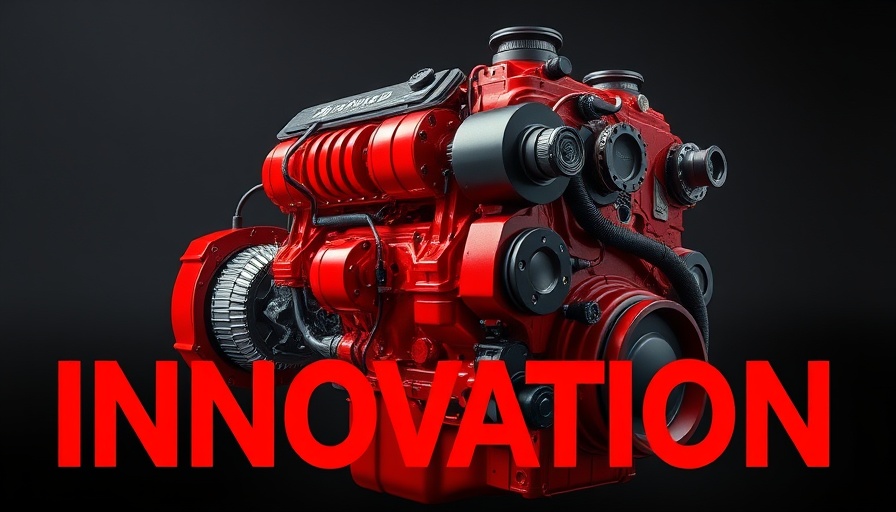
Cummins Makes a Bold Shift to Gasoline Engines
For decades, Cummins has held the title of the leading manufacturer of diesel engines, known for their toughness and long-lasting performance. However, in a surprising move that could change the landscape of the trucking industry, they are now entering the gasoline market. This transition is highlighted by their latest engine, the B6.7 Octane, introduced at the 2025 Work Truck Week. This innovative engine operates on gasoline while offering similar performance characteristics to its diesel counterparts.
In 'The Truth About Cummins’ New Gas Engine Shocking Everyone', the discussion dives into the automotive industry’s response to Cummins' shift to gasoline, highlighting key developments that warrant further exploration.
Why Gasoline Now? Exploring the Industry Dynamics
As environmental regulations tighten, notably in places like California, there's been increasing pressure for cleaner alternatives to traditional diesel engines. The Environmental Protection Agency (EPA) has set stringent emissions standards, making it essential for manufacturers to adapt. The B6.7 Octane engine has been engineered to produce cleaner emissions while maintaining the high-performance benchmarks that Cummins is known for. This shift aims to cater to fleets increasingly under scrutiny for adhering to environmental laws.
Key Features of the B6.7 Octane Engine
The B6.7 Octane is built on the same trusted platform as Cummins’ diesel engines, but offers several advancements:
Performance: It delivers up to 300 horsepower and 660 lb-feet of torque.
Fuel Efficiency: This engine boasts a 10% improvement in fuel efficiency over its gasoline competitors.
Maintenance-Friendly: It requires less frequent oil changes, making it easier to manage, with intervals extending up to 15,000 miles.
These enhancements aim to provide fleets with reliable power while also simplifying the maintenance process, an appealing factor for operators that aim to reduce downtime and improve overall efficiency.
Understanding the Helm Platform: A Future-Focused Solution
Integral to the B6.7 Octane's success is the Helm platform, designed for multi-fuel usage, allowing compatibility with gasoline, diesel, natural gas, and even hydrogen. This versatile setup gives fleets more options for adapting to various regulatory environments without having to overhaul their entire equipment. More importantly, it means that fleets can benefit from the same robust engine design, irrespective of the fuel source they choose.
Industry Reactions and Implications
The industry’s response to Cummins' move has been mixed. While many are intrigued by the potential for this engine to meet stringent emissions rules, there are also concerns about long-term performance across various driving conditions. As Cummins ventures into this uncharted territory, truck manufacturers like Kenworth are already showing interest, looking to integrate the B6.7 Octane into their medium-duty truck offerings.
Challenges Ahead: What to Keep an Eye On
Despite the excitement surrounding the B6.7 Octane, several risks accompany Cummins’ leap into gasoline engines:
Fuel Price Volatility: While gasoline is currently cheaper than diesel, price fluctuations can pose a risk for fleets trying to predict costs.
Operational Challenges: Drivers familiar with diesel engines may need training to adjust to gasoline engine behavior, which can affect performance.
Public Perception: Some view the shift to gasoline as a step back from advanced technologies such as electric and hydrogen-powered vehicles.
These factors will require careful consideration as fleets assess whether to adopt this new engine into their operations.
Final Thoughts: The Future of Trucking
Cummins' introduction of the B6.7 Octane gasoline engine signifies more than just a product launch—it represents a shift towards electrification and cleaner technologies in trucking. For fleet owners and truck operators, this engine presents an opportunity to reduce emissions while maintaining performance. However, its success will depend on how well it meets the rugged demands of real-world driving and how fleets adapt to the evolving landscape of available fuel options.
If you’re interested in learning more about the B6.7 Octane and how it can impact your fleet or business, consider connecting with local truck makers or attending industry events showcasing this new technology.
 Add Row
Add Row  Add
Add 




 Add Row
Add Row  Add
Add 

Write A Comment